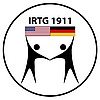B6 (2019 - 2022) - The impact of the Interleukin-27 receptor on regulatory T cells in tuberculosis and during aging
Interleukin (IL)-27, a member of the IL-12 cytokine family, is a heterodimer composed of the subunits p28 and EBI3, which are homologous to the p35 and p40 subunits of IL-12. IL-27 is mainly produced by activated dendritic cells and macrophages. It signals through a receptor consisting of a unique IL-27 receptor-alpha (Rα) chain and a gp130 chain shared with other IL-6 family members. While IL-27 was initially reported to induce T helper (Th)1 development, subsequent work revealed that this cytokine can also suppress Th1, Th17 and Th2 immune responses and support the development of IL-10-producing regulatory FoxP3-neg (Tr) cells and FoxP3-pos regulatory cells (Treg).
CD4 Th1 cells play a major role in host defense against Mycobacterium tuberculosis (Mtb) in humans and mice. In the absence of the IL-27Rα chain, decreased frequencies of Treg and a subsequent elevated Th1 immune response correlate with an increased protection after Mtb infection. Moreover, since IL-27 expression is also associated with active TB in humans, IL-27-induced Treg appear to inhibit protective immune responses during experimental and human tuberculosis (TB).
Declining immune function is well described in the elderly and contributes significantly to an increased risk and severity of infection and impaired responses to vaccination. Age-related immune dysfunction primarily affects the adaptive immune system, in particular, T cell responses. In this respect, Treg dramatically increases in numbers in aged mice and humans and contribute to the increased severity of infection in the elderly. The amount of Treg, however, is reduced in aged mice lacking the IL-27R.
Because IL-27 supports the development of Treg and appears to be responsible for the regulation of adaptive immune responses in experimental TB and during aging this project aims at elucidating the specific function of the IL-27 on regulatory T cells for susceptibility to Mtb infection and the accrual of these cells in the elderly.
Aims:
1.To examine the direct effect of IL-27 on the development of Treg during experimental TB
2. To correlate the improved protective immune response and outcome of Mtb infection with the specific loss of IL-27 on Treg
3. To identify the direct requirement of the IL-27R for the development of Treg with age
Principal Investigators


Student




